France: The Loire Valley
Fontevraud Abbey, Home of the Devout, the Royal and the Criminal
![]()
Remember the stories of "Robin Hood"? These stories introduced us to good King Richard the Lion Hearted (Richard I) and his brother, bad King John. King Henry II, their father, and Queen Eleanor of Aquitaine, their mother, were also made famous in the great movie, "Lion in Winter".
But who were these people and why are their tombs in an abbey in France?
They were members of the House of Plantagenet, the ruling dynasty in England and Anjou in western France, from 1154 with the accession of Henry II, until 1485 when Richard III died.
To learn a bit more of the story of the Plantagenets, we felt we needed to visit Fonevaud Abbey, so we boarded a small bus in Saumur on the River Loire, and traveled into the green and rolling countryside. Arriving in the village of Fontevraud, we soon came to the great walls of the Abbey. Through the arched gate, we were whisked back to the 12th century when construction of this abbey was completed. Just ahead was the massive Abbey church.
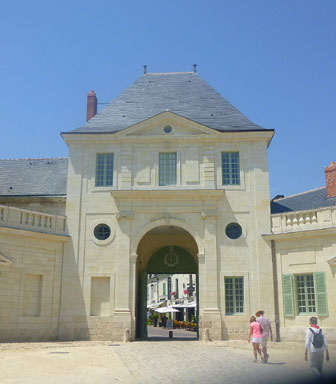
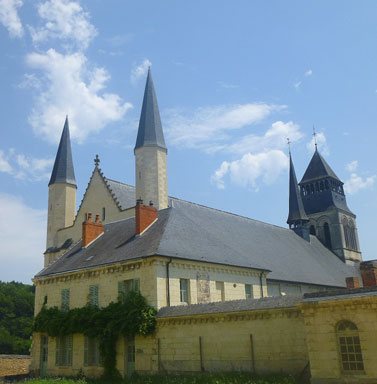
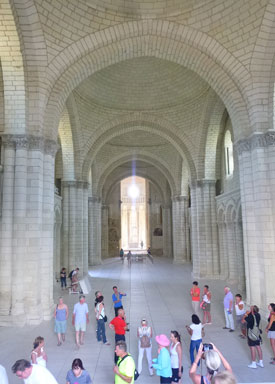
Within the church lie the tombs of King Henry II and Queen Eleanor (left below), and King Richard I and Isabella, King John's wife and queen (right below). The effigies on each tomb appear as if each person still lived and was just asleep! Eleanor is reading her bible!
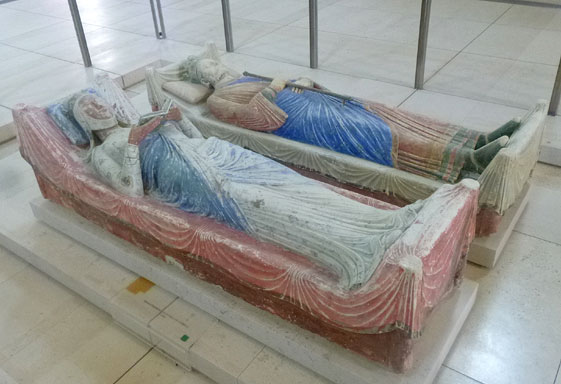
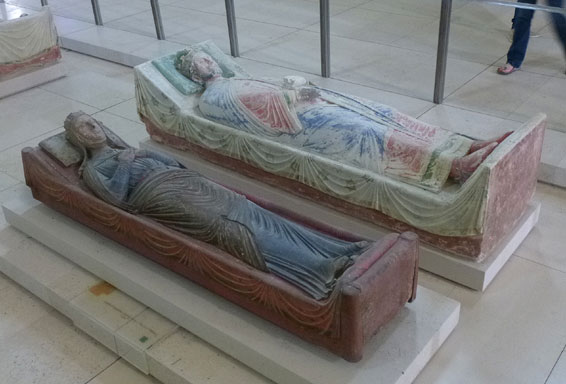
We paid our respects and continued to wander through the church, reading information panels about the history of the abbey. We learned that the Plantagenets were great benefactors of the abbey and that more Plantagenet tombs had been here but had been lost over the centuries. Eleanor lived here after Henry' IIs death, becoming a nun until her death in 1204. Both monks and nuns lived here together but separately with the monks serving the nuns and an abbess overseeing the community!
During the French Revolution, the abbey lost its religious orders and Napoleon Bonaparte ordered its transformation into a high-security prison. Housing up to 2,000 prisoners, Fontevraud was considered one of the toughest prisons in France. During the Second World War, many members of the Resistance were incarcerated here before being deported. Ten were shot on site. Pretty grim!
In 1963, the prison was closed and the buildings were regenerated and restored for a new incarnation - a Cultural Center. We strolled to the Chapter House to admire the friezes above the entrance, the arched ceiling and frescos on every wall.
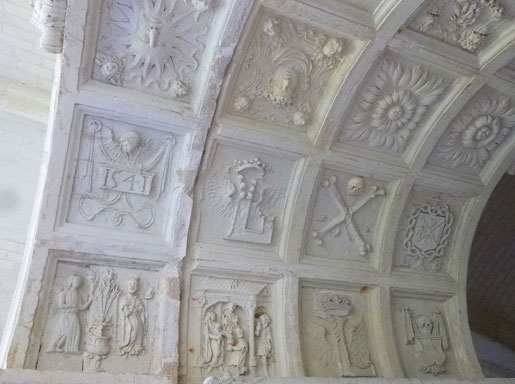
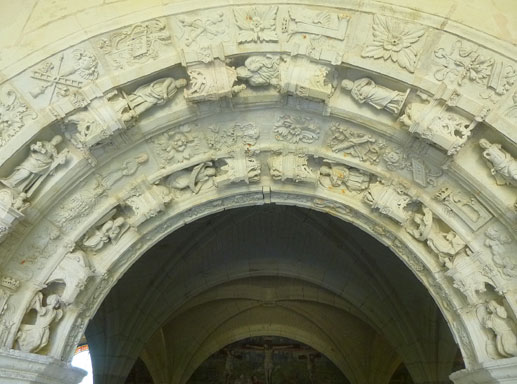
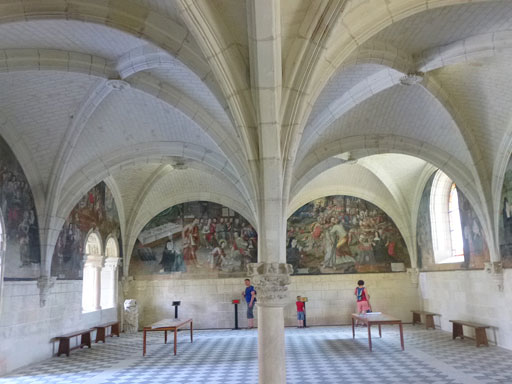
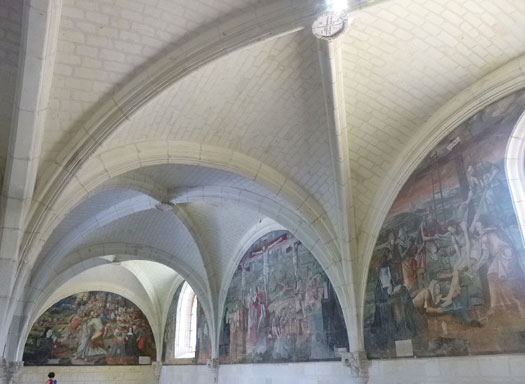
We imagined the sisters and brothers walking through the peaceful cloisters looking out to the formal gardens.
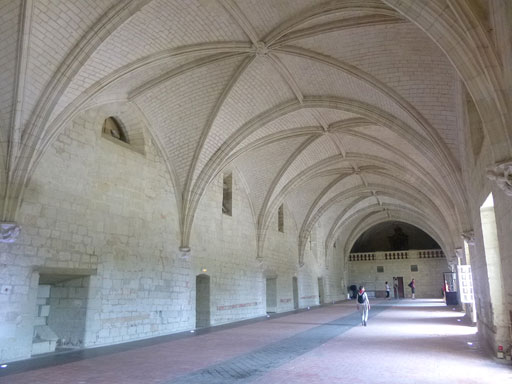
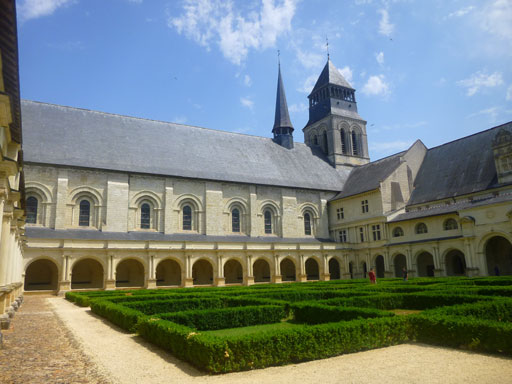
This octagonal kitchen building with its beehive roof and chimneys was once buzzing with people cooking great haunches of meat over flaming and smoking fires to feed the inhabitants, devout, royal and criminal.
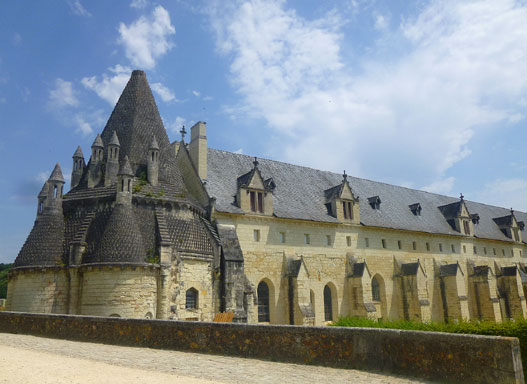
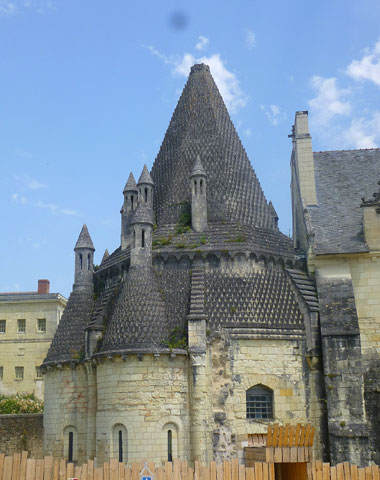
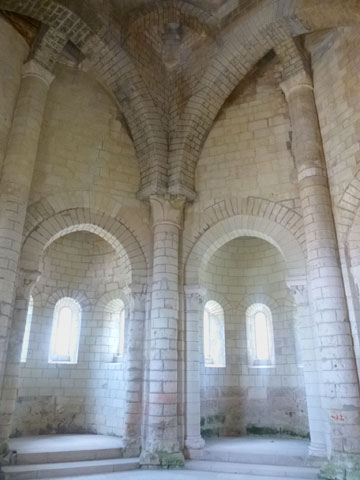
Beyond the complex of buildings, we discovered large kitchen gardens of ripening veggies and orchards, interspersed with tranquil areas for prayer and contemplation. We almost expected robed monks to appear, tools in hand, or sisters with baskets coming out to pick a fresh selection for dinner.
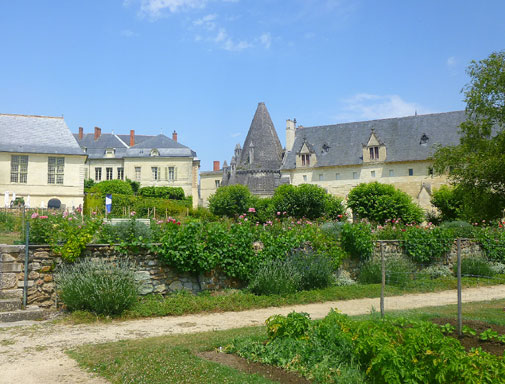
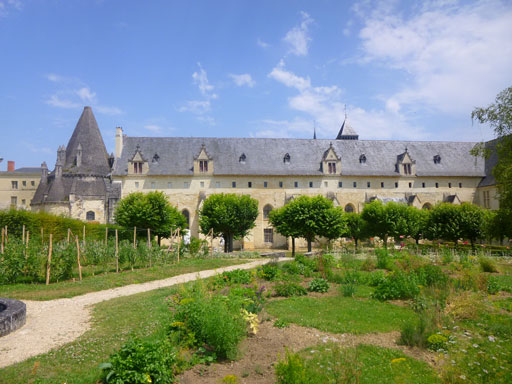
Heading back through the village to the bus stop, our heads were filled with dreams of life in 12th century France and the chants and prayers of the residents of Fontevraud.
Click here to return to our 'France: Paris and the Loire Valley' page
Click here to return to our 'Searching the World for People Friendly Cities' page
![]()